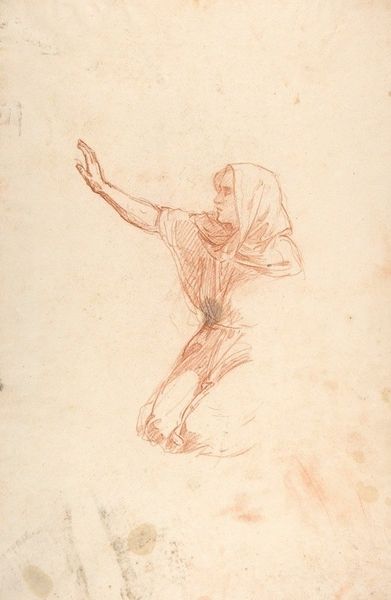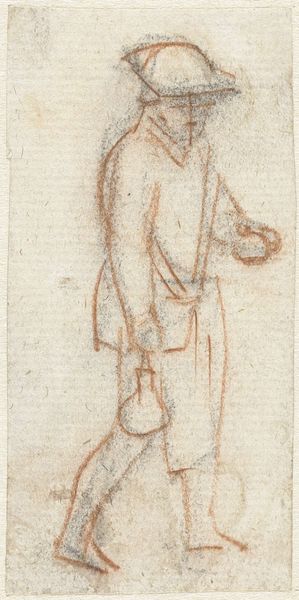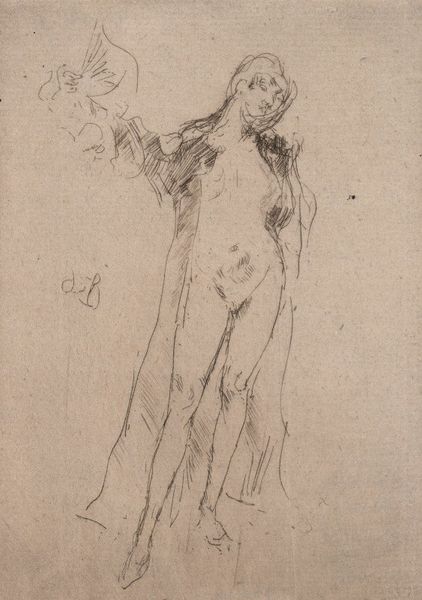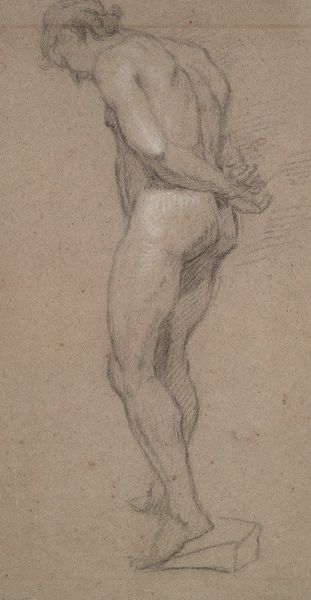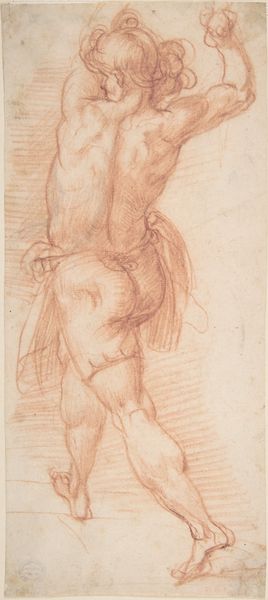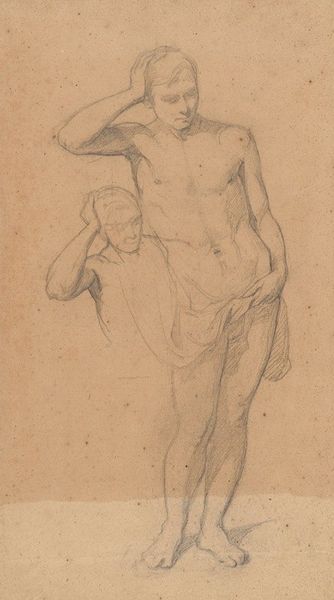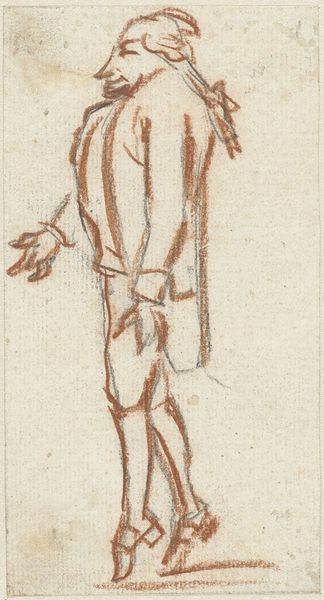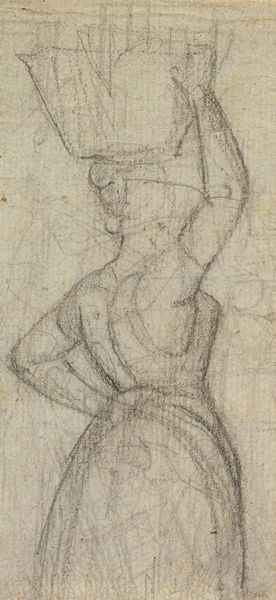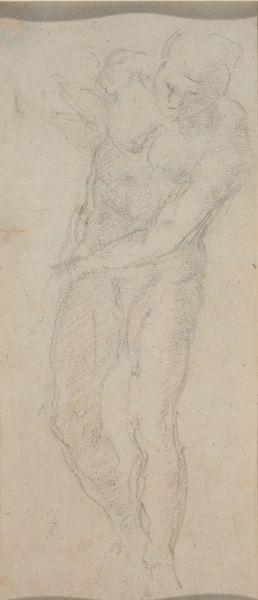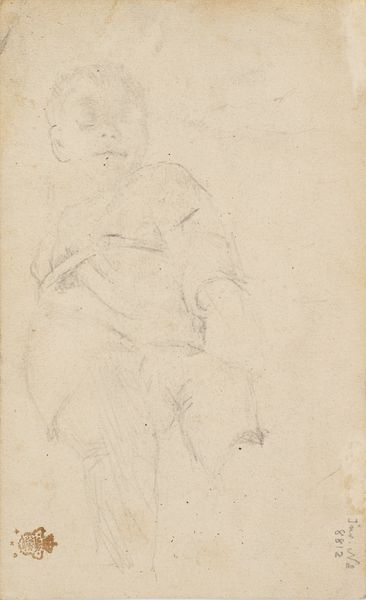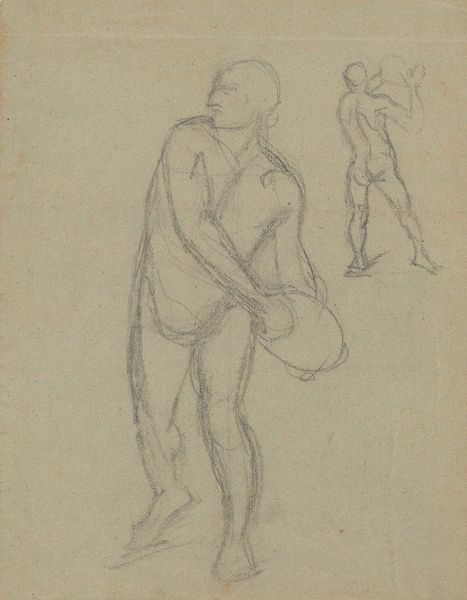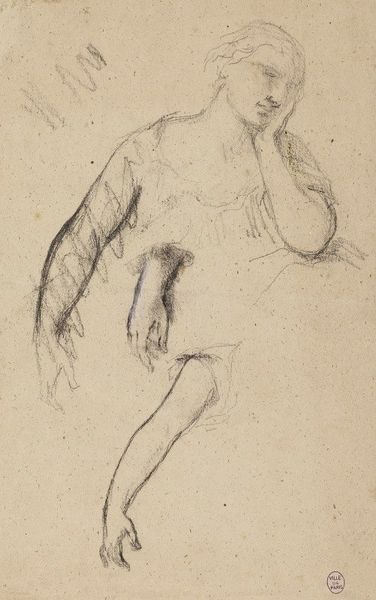
drawing, pencil
#
portrait
#
pencil drawn
#
drawing
#
pencil sketch
#
figuration
#
11_renaissance
#
pencil
#
italian-renaissance
Copyright: Public Domain: Artvee
Curator: Look at this quick sketch. It feels like it just sprung to life from Tintoretto's hand around 1579, capturing a figure with raised arms, seen from behind. It's all in pencil. It looks so simple but so expressive. Editor: The immediate impression is vulnerability, or maybe surrender? Those raised arms…it's a very powerful, elemental pose. The slight, unfinished nature of it amplifies the feeling, as though we are witnessing the genesis of a concept. Curator: Absolutely, there's a raw energy. Tintoretto used these drawings to experiment with poses, with light and shadow… Here the figure almost strains against the paper, those muscles flexing under the barest touch of the pencil. The back is very clearly described to have been made by the use of contours in an accurate and refined anatomical structure. Editor: Think about the history of that pose, though. Arms raised – historically associated with supplication, reverence, or even being crucified; even aggression, or defiance. Tintoretto reduces all that complexity to almost nothing: pure human form expressing… something elemental. There's an ambiguity, too; an incomplete reading of this form. What do we even see in terms of a gendered being in this sketch? Curator: True, its strength lies in that ambiguity. He invites us to complete the story. In this drawing you can see very faint vertical lines suggesting its final framing. We could perhaps view him dancing; reaching for something, anything, or surrendering into an experience that encompasses him completely, Editor: It's interesting that you perceive an invitation within that sense of reaching for, as I find I do not receive as warm and friendly sentiment when looking at that same action taking place in the character within this drawing. Perhaps if they were reaching towards the spectator; instead we're faced with their back which invokes distance; and possibly detachment. As it makes one query where they're striding to. It brings a heavy contrast of mystery compared to invitation. Curator: Maybe it depends on where you are, metaphorically, when you view it? Maybe it shifts with your own sense of surrender or defiance. Editor: Indeed, it's a mirror, reflecting something unique for each observer. What begins as a simple sketch unfolds into a canvas for our own internal dramas, even within the iconographical ambiguity that we each receive in contrast. A beautiful kind of visual empathy in simple execution.
Comments
No comments
Be the first to comment and join the conversation on the ultimate creative platform.
